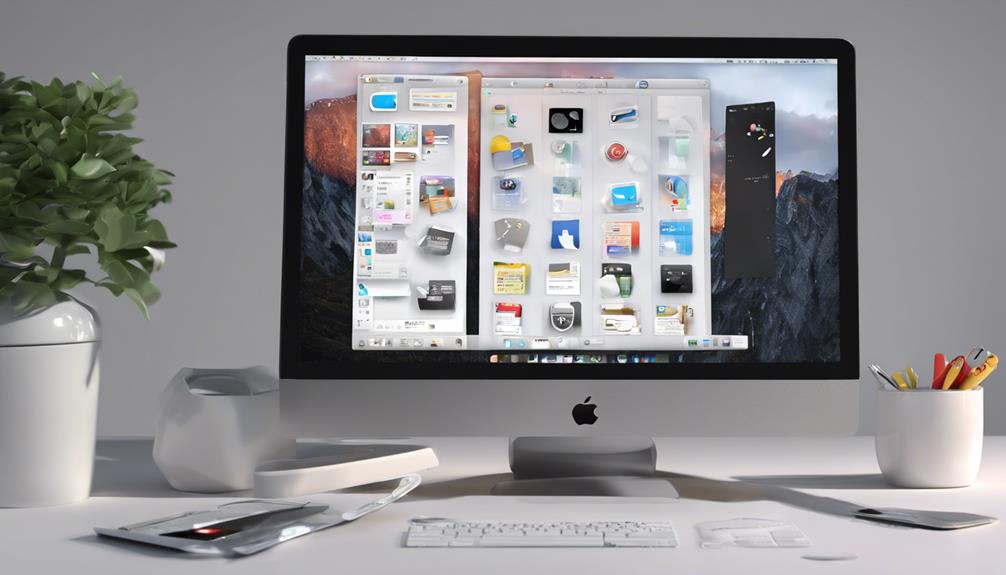Uninstalling apps on your Mac is straightforward. First, open the Applications folder and locate the app you want to uninstall. Drag the app icon to the Trash bin or right-click and select 'Move to Trash'. If you prefer using Launchpad, find the app, click and hold until the icons jiggle, then click the 'X' to remove it. Don't forget to empty the Trash to finalize the removal, and check the Library folder for any leftover files that may slow down your system. There's plenty more to explore when it comes to keeping your Mac tidy and efficient.
Key Takeaways
- Open the Applications folder, locate the app, and drag it to the Trash or right-click and select 'Move to Trash'.
- Use Launchpad to delete apps by clicking and holding the icon until it jiggles, then click the 'X' to remove it.
- Right-click the app in the Dock, select 'Options', then 'Remove from Dock' to hide the shortcut, but remember this doesn't uninstall the app.
- Check the Library folder for leftover files after uninstallation, deleting any related caches or preferences to ensure thorough cleanup.
Understanding App Installation on Mac

When you download an app on your Mac, it's usually as simple as dragging it to your Applications folder. This straightforward method works for many app types, especially those downloaded from the internet or the Mac App Store.
However, not all apps install the same way. Some might come in a package file, requiring you to double-click and follow prompts to complete the installation.
You might also encounter apps that use a different installation method, such as homebrew, which allows you to manage your software through the command line. This method can be great for developers or users who want more control over their app installations.
Understanding these installation methods helps you navigate your Mac more effectively, ensuring you can easily find and use the apps you love.
Familiarizing yourself with various app types and their respective installation processes can make your experience smoother and more enjoyable. Whether you're downloading productivity tools, games, or utilities, knowing how to install them correctly is essential.
You'll feel more confident in managing your apps, ultimately enhancing your sense of belonging in the vibrant Mac community.
Using Finder to Uninstall Apps
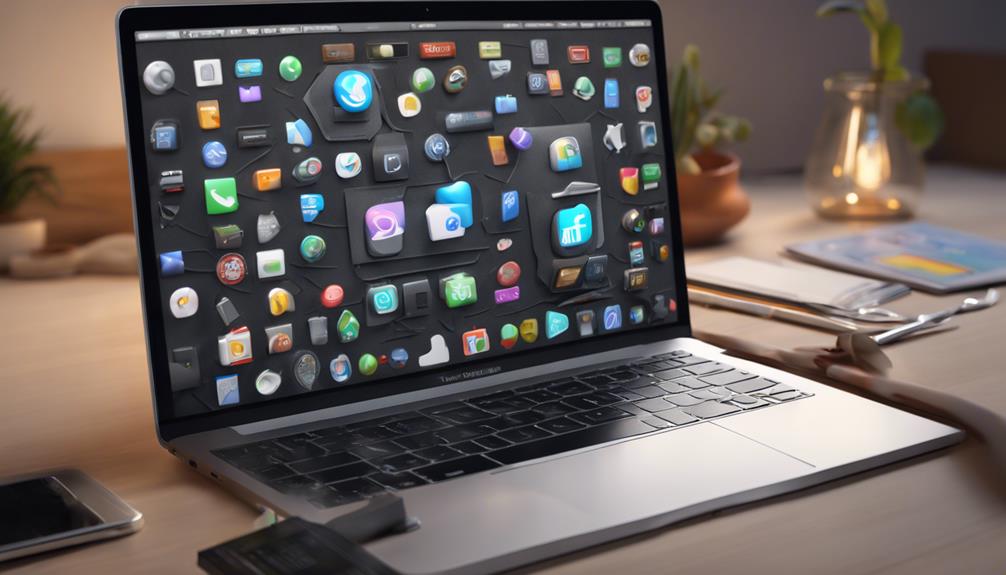
To uninstall apps using Finder, just open the Applications folder and locate the app you want to remove. This straightforward method is a key part of effective app management on your Mac.
Once you find the app, follow these simple steps:
- Drag the app icon to the Trash bin on your Dock.
- Right-click (or Control-click) on the app icon and select 'Move to Trash.'
- Empty the Trash by right-clicking the Trash bin and selecting 'Empty Trash' to permanently remove the app.
Using Finder navigation not only helps you uninstall unwanted apps, but it also keeps your system running smoothly.
It's a great way to declutter your Mac and make sure you're only keeping the apps you really use.
Remember, managing your apps efficiently can enhance your overall experience, making your Mac feel more personalized and welcoming.
Removing Apps From Launchpad

Removing apps from Launchpad is a quick and intuitive process that lets you declutter your Mac's interface. When you simplify your Launchpad organization, you create a space that feels more welcoming and personalized.
To remove an app, simply open Launchpad, find the app you want to delete, and click and hold its icon until they all start to jiggle. You'll see an “X” appear on the app icons you can delete. Click the “X,” confirm the removal, and watch that app vanish, leaving you with a more streamlined view.
Here's a little table to illustrate the benefits of a tidy Launchpad:
| Benefit | Emotional Impact |
|---|---|
| Enhanced Focus | Less distraction |
| Increased Productivity | More efficient workflow |
| Personalized Experience | A sense of ownership |
With app icon customization, you can also rearrange your remaining icons to suit your style. So go ahead and enjoy a Launchpad that feels uniquely yours!
Deleting Applications via Trash

You can easily delete applications by dragging them to the Trash, freeing up valuable space on your Mac. This method not only helps you reclaim system storage but also guarantees that any unnecessary app permissions are removed, enhancing your device's performance.
Here's how to do it smoothly:
- Open your Applications folder.
- Locate the app you want to uninstall.
- Click and drag the app icon to the Trash in your Dock.
By following these steps, you can efficiently manage your applications and keep your system clutter-free. It's a simple yet effective way to guarantee your Mac runs efficiently without carrying the weight of unused apps.
Plus, you get to enjoy the satisfaction of cleaning up your digital space.
Uninstalling From the Dock
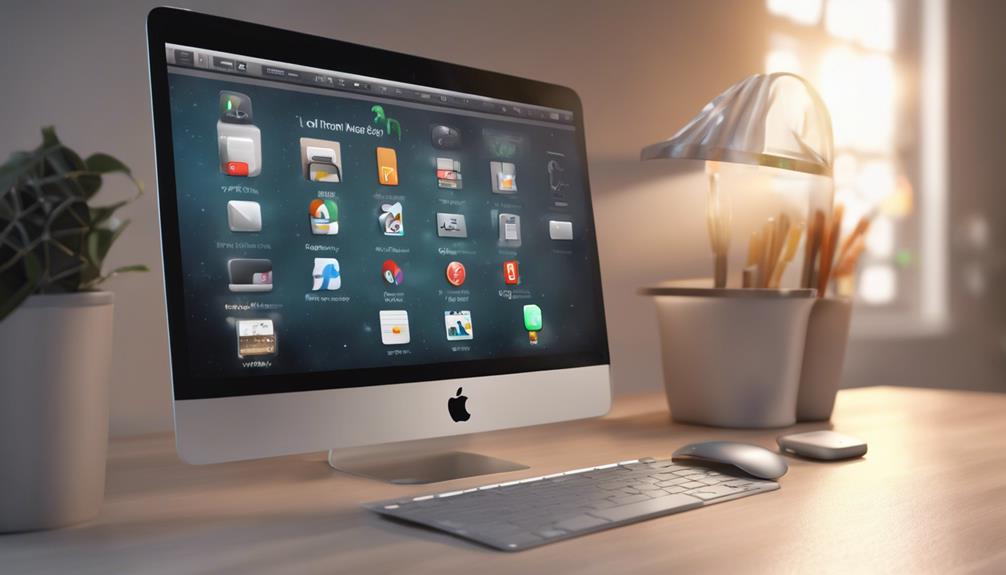
Often, uninstalling apps directly from the Dock is a quick and straightforward option that saves you time. If you see an app in your Dock that you no longer need, it's simple to get rid of it. Just right-click (or Control-click) the app icon and select “Options.” From there, choose “Remove from Dock.”
This action won't delete the app from your Mac; it merely removes the Dock shortcut, helping you keep your app organization tidy.
If you want to completely uninstall the app, you'll need to follow a different route, but removing it from the Dock is a great first step in decluttering. By doing this, you're not only streamlining your Dock but also signaling to yourself what's essential.
Using Third-Party Uninstallers
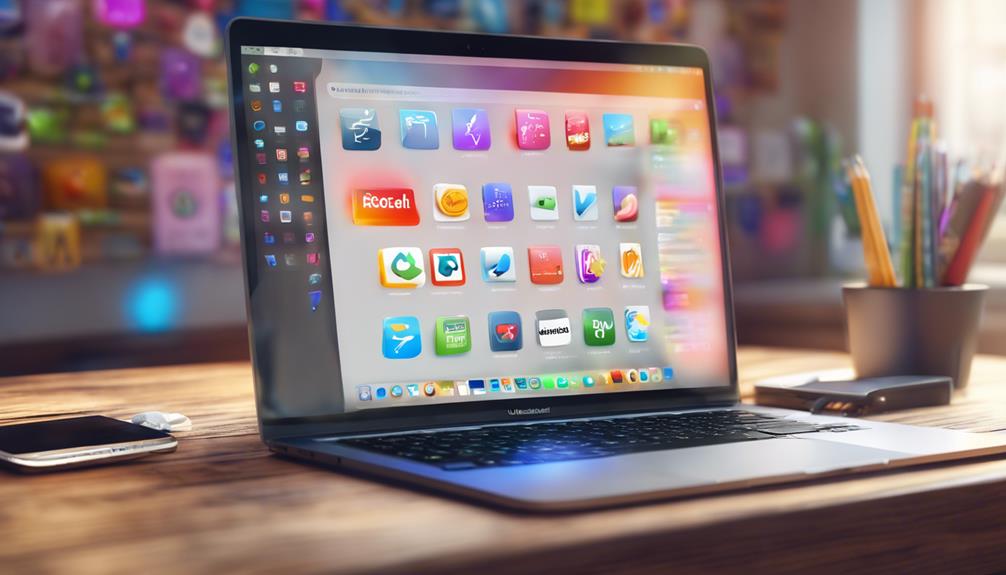
For a more thorough app removal, consider using third-party uninstallers, which can help eliminate leftover files and guarantee a complete clean-up.
These tools come with several third-party benefits that make your uninstalling process easier. They can save you time and make certain your Mac stays clutter-free.
Here are some popular uninstallers you might want to explore:
- AppCleaner: A user-friendly option that tracks all app-related files.
- CleanMyMac X: Offers a suite of optimization tools alongside app uninstallation.
- AppZapper: A drag-and-drop interface that simplifies the removal process.
Using these popular uninstallers not only helps you remove the apps you no longer need but also clears out the hidden files that can take up space and slow down your Mac.
Plus, they often come with additional features to help keep your system running smoothly.
Manually Deleting App Files
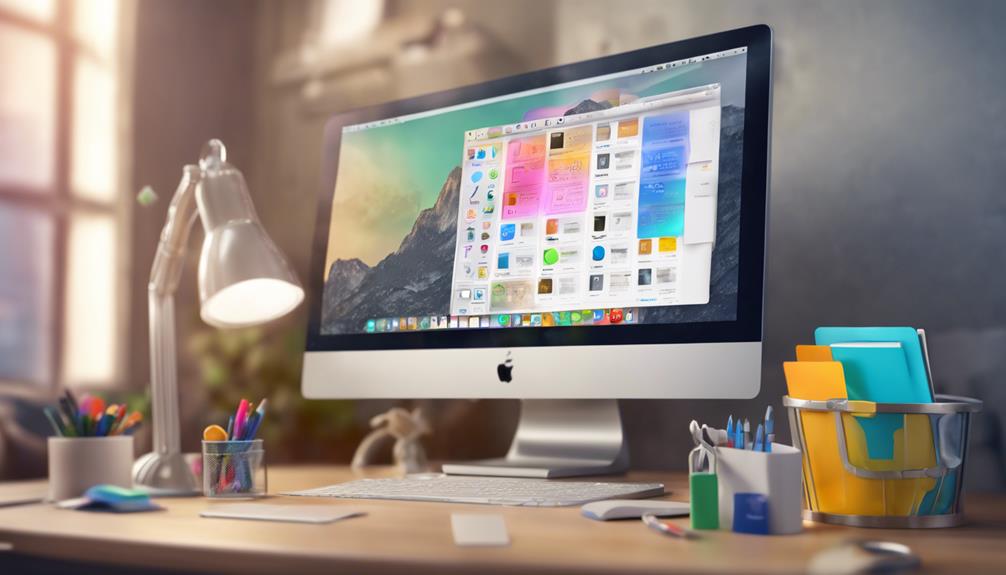
Manually deleting app files on your Mac can be a straightforward way to guarantee you're removing all traces of unwanted software. When you uninstall an app, it often leaves behind app dependencies—files that can clutter your system and hamper performance.
To start, locate the app you want to remove in the Applications folder. Drag it to the Trash, but don't stop there.
Next, you'll want to get into your Library folder. Hold down the Option key, click on the Go menu in Finder, and select Library. Here, you'll find several subfolders such as Application Support, Caches, and Preferences. Search for any folders or files related to the app you just deleted. Deleting these remnants can help improve your Mac's system performance and prevent conflicts with future applications.
After you've scoured the Library for leftover files, empty your Trash to finalize the process. By taking these extra steps, you ascertain a cleaner workspace, allowing your Mac to run more efficiently.
You'll feel more in control of your system, giving you the belonging you crave in your digital space.
Checking for Leftover Files

After you've deleted an app and its associated files, it's important to check for any leftover remnants that might still be hiding on your Mac.
These app remnants can clutter your system, taking up valuable space and causing potential conflicts with other applications. To guarantee a thorough file cleanup, follow these steps:
- Search Library Folders: Look into the Library folder under your user directory for residual files. This is where many apps store preferences and support files.
- Delete Cache Files: Check the Caches folder within the Library. These files can accumulate over time and may not always be removed when you uninstall an app.
- Check Preferences: Inspect the Preferences folder for any configuration files related to the deleted app. These often carry the app's name and can be safely deleted.
Reinstalling Apps if Needed
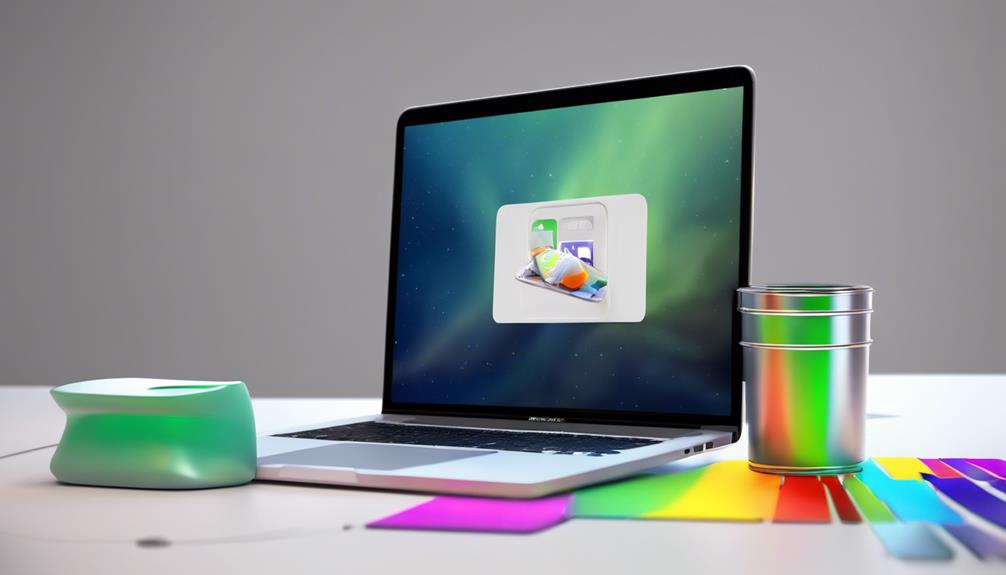
Reinstalling apps can be a straightforward process, allowing you to quickly restore functionality when needed. Whether you've uninstalled an app to free up space or resolved issues, getting it back is easier than you might think.
First, check your Mac's App Store for reinstall options. Simply open the App Store, go to your account, and look for any purchased apps you can re-download. It's as simple as clicking the download button. If the app isn't available there, visit the developer's website for a direct download link.
In some cases, you might need to sign in again or enter your license key for app recovery. Don't worry; this is a common step that guarantees you've got the right to use the app.
After reinstalling, make sure to check for updates to guarantee ideal performance. You'll be back on track in no time, enjoying the features you love.
Tips for Managing Applications

Regularly managing your applications can help keep your Mac running smoothly and guarantee you're only using the tools you need.
By prioritizing app organization, you'll not only enhance your workflow but also boost application performance. Here are some tips to get you started:
- Categorize Your Apps: Group similar applications together in folders, making them easier to find and access.
- Delete Unused Apps: If you haven't opened an app in months, it's probably time to let it go.
- Update Regularly: Keep your applications up to date to ascertain you're benefiting from the latest features and security enhancements.
Conclusion
Uninstalling apps on your Mac isn't just a chore; it's a liberating experience that clears the digital clutter from your life.
With just a few clicks, you can reclaim precious space and restore your Mac to its former glory.
Remember, every app you remove is like shedding a heavy weight, making your device lighter and faster.
So go ahead, embrace the power of decluttering, and watch your Mac soar to new heights of efficiency!
